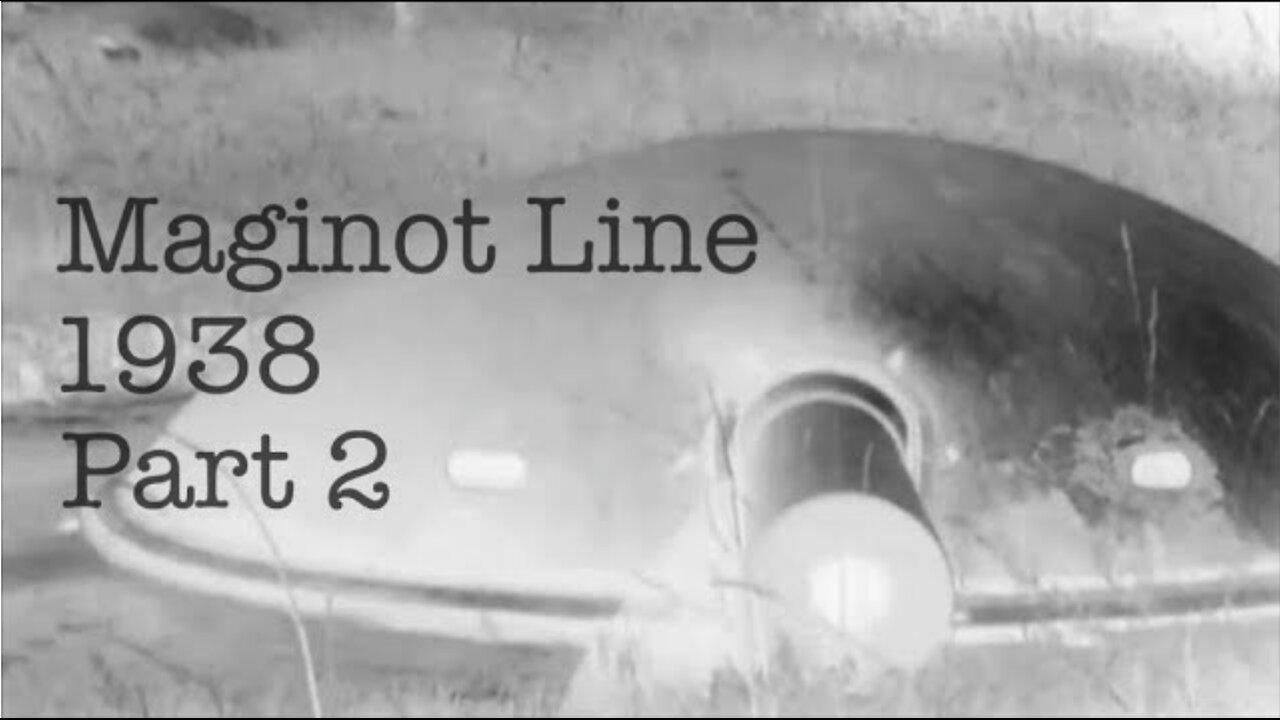Premium Only Content

Inside the Maginot Line 1938 Pt 2 Focusing on heavy gun turrets and air support - RARE FILM FOOTAGE
SUPPORT THE CHANNEL and get access to exclusive film footage
www.Patreon.com/Military1945
Episode 127
The Maginot Line, named after the French Minister of War André Maginot, is a line of concrete fortifications, obstacles and weapon installations built by France in the 1930s to deter invasion by Germany and force them to move around the fortifications. The Maginot Line was impervious to most forms of attack. In consequence, the Germans invaded through the Low Countries in 1940, passing it to the north. The line, which was supposed to be fully extended further towards the west to avoid such an occurrence, was finally scaled back in response to demands from Belgium. Indeed, Belgium feared it would be sacrificed in the event of another German invasion. The line has since become a metaphor for expensive efforts that offer a false sense of security.
Constructed on the French side of its borders with Italy, Switzerland, Germany, Luxembourg and Belgium, the line did not extend to the English Channel. French strategy therefore envisioned a move into Belgium to counter a German assault. Based on France's experience with trench warfare during World War I, the massive Maginot Line was built in the run-up to World War II, after the Locarno Conference in 1925 gave rise to a fanciful and optimistic "Locarno spirit". French military experts extolled the line as a work of genius that would deter German aggression, because it would slow an invasion force long enough for French forces to mobilize and counterattack.
The Maginot Line was indeed invulnerable to aerial bombings and tank fire; it featured underground railways as a backup. It also had state-of-the-art living conditions for garrisoned troops, supplying air conditioning and eating areas for their comfort. French and British officers had anticipated the geographical limits of the Maginot Line; when Germany invaded the Netherlands and Belgium, they carried out plans to form an aggressive front that cut across Belgium and connected to the Maginot Line.
However, the French line was weak near the Ardennes Forest. General Maurice Gamelin, when drafting the Dyle Plan, believed this region, with its rough terrain, would be an unlikely invasion route of German forces; if it were traversed, it would be done at a slow rate that would allow the French time to bring up reserves and counterattacks. The German Army, having reformulated their plans from a repeat of the First World War-era plan, became aware of and exploited this weak point in the French defensive front. A rapid advance through the forest and across the River Meuse encircled much of the Allied forces, resulting in a sizable force having to be evacuated at Dunkirk leaving the forces to the south unable to mount an effective resistance to the German invasion of France.
-
 9:16
9:16
Military1945
7 months ago2nd Mountain Div. Pt 2 - Regiment 136 - German-Soviet Frontier Treaty 28.9.39 - Valentin Feurstein
2181 -
 LIVE
LIVE
SOLTEKGG
2 hours ago🔴LIVE - Community Game Night - GIVEAWAY
256 watching -
 LIVE
LIVE
SpartakusLIVE
5 hours ago#1 Friday Night HYPE, viewers GLUED to the screen
175 watching -
 55:50
55:50
NAG Podcast
3 hours agoAda Lluch: BOLDTALK W/Angela Belcamino
531 -
 LIVE
LIVE
VapinGamers
52 minutes agoKellan Graves - Fallen - Game Review and Game KeyGiveaway - !rumbot !music
60 watching -
 1:06:41
1:06:41
MattMorseTV
3 hours ago $24.46 earned🔴Trump PREPARES for WAR with VENEZUELA.🔴
28.1K43 -
 39:59
39:59
Clownfish TV
8 hours agoHollywood NO MORE! Animation Industry Will DIE First?! | Clownfish TV
6302 -
 25:57
25:57
The Kevin Trudeau Show Limitless
2 days agoThe Sound Of Control: This Is How They Program You
54.9K17 -
 47:41
47:41
Sarah Westall
2 hours agoNew Actions by Insiders Never Seen in History – Bitcoin Moves Ahead w/ Andy Schectman
12.9K1 -
 1:08:26
1:08:26
Glenn Greenwald
4 hours agoGlenn Takes Your Questions on Bill Ackman's Meddling in the NYC Election, Dems' Refusal to Endorse Zohran; MAGA Abandoning "America First," and More | SYSTEM UPDATE #537
101K29